If you’re planning a toilet flush valve replacement or need to change worn parts inside your tank, this guide gives you the fastest, safest path. You’ll get an 8-step quick answer, a tool checklist, clear compatibility tips, and fixes for leaks or weak flushes—based on manufacturer-style instructions and proven DIY practice.
Quick Answer: Replace Toilet Flush Valve in 8 Steps
-
Leak at tank-to-bowl: Dry the area and check where the drip starts. If it’s at the big gasket, your tank may not be seated evenly. Drain the tank, loosen the tank bolts, reseat the tank, and retighten the bolts evenly. If the bolts themselves drip, replace the bolt washers. If the supply line drips, replace the washer.
-
Slow or weak flush: Set the water level to the tank’s “water line” mark. Make sure the refill tube points into the overflow tube, not into the tank. Check the flapper lift: too little chain leaves the flapper barely opening; too much chain can jam under the flapper. Aim for 1–2 links of slack.
-
Toilet running after valve replacement: Look for debris on the new seat. Wipe the seat and underside of the flapper. Confirm the flapper is aligned and the chain is not too tight. If water spills into the overflow tube when the tank is full, lower the fill level. Make sure the big locknut on the valve is snug (hand-tight plus a small wrench nudge), so water can’t seep around the base.
-
Noise or water hammer on refill: Check that the refill tube is secured and not splashing. If hammer persists, consider an arrestor at the supply or a newer anti-siphon fill valve. Also confirm the shut-off valve is fully open.
Tools, Parts, and Prep before Replacing Flush Valve(Checklist)
-
Adjustable wrench, screwdriver, sponge or towels, bucket, rubber gloves
-
New flush valve kit (universal or toilet-specific); confirm fit for one-piece vs. two-piece
-
Optional: penetrating oil, hacksaw (for corroded bolts), new tank bolts and tank-to-bowl gasket
-
Prep tips: protect the floor with a towel, photograph the setup before disassembly, verify the shut-off valve works
When and Why to Replace Toilet Flush Valve
Changing a toilet flush valve might sound intimidating, but understanding its role makes it easy. The toilet flush valve is the part inside the tank that lifts to release water into the bowl during a flush. In many homes, it’s one of the top reasons a toilet runs or leaks. How do you know it’s time to replace toilet flush valve and not just the flapper?
Look for these signs:
-
The toilet is constantly running even after replacing the flapper. That points to a worn or warped valve seat, a cracked overflow tube, or a failed base gasket.
-
You see water leaking from the tank-to-bowl area. Sometimes the leak is due to tank bolts or the big foam or rubber gasket under the flush valve. If the valve base is deformed or the gasket is crushed or brittle, replace the valve.
-
The flush is weak or incomplete. If the water level is correct and the flapper lifts fully, but the flush is still poor, the valve opening or seat may be damaged.
-
The overflow tube is cracked or loose. This is part of the flush valve assembly, so replace the entire unit.
When can you replace only the flapper? If the valve seat is smooth, the overflow tube is solid, and the problem is a worn seal or curled flapper, a simple flapper swap often solves the running toilet. But if the plastic base is warped or the seat is pitted, replacing the entire flush valve is the lasting fix.
Most standard residential flush valves work well for about 5–7 years, depending on water quality and usage. Hard water and cleaning chemicals can shorten that span. Regular inspection and prompt leak repair can save thousands of gallons of water per year—according to the U.S. Environmental Protection Agency (EPA), a single running toilet can waste up to 200 gallons a day
How to Replace Toilet Flush Valve: Detailed Steps
You’ll follow the same core method for most toilets, but there is one key difference: two-piece toilets usually require removing the tank to reach the large nut that holds the valve. One-piece toilets keep everything inside the same ceramic body, so you replace toilet flush valve from inside the tank.
Can you replace a toilet flush valve without removing the tank? On a two-piece toilet, no—you must lift the tank because the big locknut is underneath. On a one-piece toilet, yes—there is no separate tank to remove, and the locknut is accessible from inside the tank.
Drain and Disconnect
Turn off the water supply at the shut-off valve by turning it clockwise. Flush the toilet and hold the handle down to empty as much water as you can. Use a sponge or towel to remove the remaining water from the tank until it’s dry. Take off the tank lid and set it in a safe place. Disconnect the water supply line at the bottom of the tank using an adjustable wrench. Keep a towel and small bucket handy to catch drips.
Detach the flapper chain from the flush lever. Pull the refill tube off the overflow tube and set it aside. This clears the area so you can safely remove parts.

Remove Tank (two-piece toilets)
For a two-piece toilet, you’ll now separate the tank from the bowl. Look under the tank: you’ll see two or three tank bolts that pass through into the bowl. Hold each bolt head inside the tank with a screwdriver while turning the nut under the tank with a wrench. If they are corroded, apply penetrating oil, wait several minutes, and try again. Still stuck? Carefully use a hacksaw to cut the nut or the bolt shank from below.
Lift the tank straight up and place it gently on a towel. The big donut-shaped gasket between the tank and bowl may stick; ease it off and set it aside if you plan to reuse it, but replacing it now is often smart.
Tip for reassembly: When you later tighten these bolts, snug them evenly a little at a time. Overtightening can crack the ceramic.
Remove Old Flush Valve
Wondering how to remove toilet flush valve the right way? With the tank off (or in a one-piece, with the tank empty), locate the large locknut underneath or inside the tank that holds the flush valve. This nut is often called the spud nut. Loosen it by hand if possible, or with a wrench if needed. If it’s stubborn, a small amount of penetrating oil helps. If it’s frozen by corrosion, you can carefully cut it with a hacksaw, taking care not to mark the porcelain.
Lift out the old flush valve. Remove the old base gasket and any washers. Clean the ceramic around the opening so the new gasket can seal. Wipe away mineral buildup and debris. A clean, smooth surface is key to a watertight seal.
Install New Flush Valve
If you’re learning how to install toilet flush valve, start by taking the new flush valve kit out of the package and laying out the parts. Most kits include the valve body with the overflow tube, a new seat, a large base gasket, washers, a large locknut, and a flapper.
Seat the new base gasket on the valve per the kit diagram. Insert the valve through the tank opening. Align the overflow tube toward the rear of the tank so the refill tube will point into it easily later. From under the tank (two-piece) or inside (one-piece), install the washers in the order shown in your kit, then thread on the locknut.
Hand-tighten the locknut. Do not overtighten. The gasket does the sealing, not brute force. Most manufacturers warn that too much torque can crack the tank or deform the gasket.
If your kit includes a new flapper, attach it now to the valve ears but leave the chain for later adjustment. If your toilet uses a seal instead of a flapper, install it per the kit directions.

Reassemble and Adjust
For a two-piece toilet, place a new tank-to-bowl gasket over the valve outlet. Gently set the tank back onto the bowl, guiding the bolts into their holes. Install the nuts and washers under the bowl. Tighten each a few turns, cycling from one bolt to the next so you bring the tank down evenly. Stop when the tank is level and stable. Avoid over-tightening.
Reconnect the flapper chain to the flush lever so there is about 1–2 links of slack when the flapper is closed. Connect the refill tube so it directs water into the overflow tube. Reattach the water supply line and hand-tighten its nut, then give it a small additional turn with the wrench. Do not crank it down; the washer inside provides the seal.
Turn the shut-off valve counterclockwise to open the water supply. Let the tank fill. Watch for leaks at the supply line, tank bolts, and the wide tank-to-bowl gasket. If you see drips, snug the related connections slightly and recheck.
Adjust the water level to the mark inside the tank. If the mark is missing, set the level about 1 inch below the top of the overflow tube. Test-flush several times. Confirm the flapper lifts fully and drops cleanly to seal. Fine-tune the chain so the flapper opens wide but is not held up after you release the handle.
You’re done when the flush is strong, the tank refills to the line, and there are no leaks.
Troubleshooting After Installation
What if things aren’t perfect after you replace toilet flush valve? Use these quick checks to fix the flush valve on a toilet without guesswork.
-
Leak at tank-to-bowl: Dry the area and check where the drip starts. If it’s at the big gasket, your tank may not be seated evenly. Drain the tank, loosen the tank bolts, reseat the tank, and retighten the bolts evenly. If the bolts themselves drip, replace the bolt washers. If the supply line drips, replace the washer.
-
Slow or weak flush: Set the water level to the tank’s “water line” mark. Make sure the refill tube points into the overflow tube, not into the tank. Check the flapper lift: too little chain leaves the flapper barely opening; too much chain can jam under the flapper. Aim for 1–2 links of slack.
-
Toilet running after valve replacement: Look for debris on the new seat. Wipe the seat and underside of the flapper. Confirm the flapper is aligned and the chain is not too tight. If water spills into the overflow tube when the tank is full, lower the fill level. Make sure the big locknut on the valve is snug (hand-tight plus a small wrench nudge), so water can’t seep around the base.
-
Noise or water hammer on refill: Check that the refill tube is secured and not splashing. If hammer persists, consider an arrestor at the supply or a newer anti-siphon fill valve. Also confirm the shut-off valve is fully open.
A simple decision path helps:
-
Leak at base of tank? Reseat tank-to-bowl gasket, tighten bolts evenly, replace old washers if needed.
-
Leak at bolts? Replace bolt sets and washers; tighten evenly.
-
Leak at supply? Reseat or replace supply line washer and snug the nut.
-
Persistent running into the bowl? Clean seat, set correct chain slack, verify water level, and check for cracks in the overflow tube.

Choosing the Right Valve (Compatibility, Brands, Types)
Choosing the correct toilet tank flush valve matters just as much as installing it well. Based on guidance from the International Association of Plumbing and Mechanical Officials (IAPMO), proper valve selection ensures the toilet maintains its designed flush performance and water efficiency. The good news: many toilets accept a universal flush valve. The caution: some models use a proprietary valve or a specific overflow height. Here’s how to match parts with confidence—without guesswork.
-
Two-piece vs. one-piece: Two-piece toilets use a separate tank and bowl, and the flush valve installs through a hole at the bottom of the tank. One-piece toilets house everything in one body. One-piece units often need model-specific valves, and access to the locknut is from inside the tank.
-
Universal vs. proprietary: A “universal” flush valve fits many standard two-piece toilets with a common hole size. If your toilet has a unique seat shape, a special canister, an integrated seal, or a dual-flush button system, it may need an original-style part. Check the model number (usually inside the tank wall) and match that with the kit packaging or an official parts list from the manufacturer.
-
Overflow height and seat diameter: The overflow tube must be tall enough to prevent water from spilling into it at the correct water line, but low enough to protect against overfill. Measure your old overflow tube and match the new one to within about 1/2 inch. Also confirm the diameter of the valve opening and seat type in the tank.
-
Dual-flush and pressure-assisted toilets: Dual-flush toilets use different mechanisms and seals and often require specific kits. Pressure-assisted units are a different design entirely; they use a sealed tank-within-a-tank system. For those, follow the maker’s guide closely and order the exact parts called for.
-
When to choose complete kits: If your tank bolts are rusty, the large tank-to-bowl gasket looks flattened, or the washers are brittle, a full kit with bolts, washers, and the big gasket saves time and prevents future leaks.
Not sure what you have? Snap photos of the inside of the tank and the markings. Compare hole sizes and overflow height from your current assembly to the specs listed on a replacement kit. If you can find your toilet’s model stamp inside the tank, use that to cross-check.
Safety, Time, Costs, and Expectations
Most handy homeowners can replace the flush valve themselves. It’s a moderate job with a few watch-outs: heavy ceramic, brittle parts, and the risk of overtightening. If you prefer to hire it out, here’s what to expect.
-
Time: About 1 hour for a standard two-piece toilet, a bit less for a one-piece if access is good.
-
Difficulty: Moderate if you can lift a tank safely and use hand tools.
-
Part cost: Usually $15–$30 for a standard kit.
-
Plumber cost: About $90–$180 for labor in many U.S. areas, plus parts.
Safety tips:
-
Turn off the water and test the shutoff by flushing before you start.
-
Lift the tank carefully with two hands; ask for help if the tank is large or high on the wall.
-
Wear eye protection if you need to cut corroded bolts.
-
Do not overtighten any nut on ceramic. The gasket makes the seal.

Pro Tips and Common Mistakes to Avoid
-
Do not overtighten the large valve nut or tank bolts. Hand-tight plus a small wrench tweak is enough in most cases.
-
Drain the tank completely. A few sponge swipes prevent a mess when you lift the tank.
-
Align the base gasket carefully. A twisted gasket is a guaranteed leak.
-
Keep extra tank bolts and a refill tube on hand. Corroded bolts and cracked tubes are common.
-
Aim the overflow to the rear of the tank so the refill tube lines up cleanly.
-
Always use the included washers in the order shown. Metal against porcelain can crack or leak.
Manufacturer-Style Guidance You Should Follow
Across many instructions and training guides, you’ll see the same core points:
-
Align the overflow tube to the back of the tank so the refill tube drops inside it, not into the tank.
-
Tighten tank bolts evenly, alternating from one to the other, to seat the tank flat on the bowl.
-
Use the gaskets and washers supplied and place them in the given order.
-
Adjust the water level to the “water line” mark molded inside your tank. If there is no mark, set the level about 1 inch below the top of the overflow tube.
These are simple steps, yet they prevent most leaks and running issues after installation.
Maintenance for Longevity
Want your new flush valve to last? A little care goes a long way.
-
Inspect the flapper and seals once a year. If the flapper is warped, sticky, or leaves dye-colored water in the bowl during a dye test, replace it. Flappers are inexpensive and easy to change.
-
Clean mineral buildup around the valve seat. Wipe the seat with a soft cloth. Avoid harsh abrasives that scratch the sealing surface.
-
Check water level and chain tension every few months. If the chain snags or is too tight, it can hold the flapper open.
-
Watch your water quality. Hard water and heavy chlorine can age rubber parts faster. If your water is very hard, consider treatment in the home to reduce mineral deposits over time.
Can you repair a toilet flush valve instead of replacing it? Often yes—if the issue is a worn flapper or a simple seal. If the overflow tube is cracked or the base is warped, replacement is the right move.
Summary and Key Takeaways
Replacing the flush valve is the right move when the flapper no longer solves a running toilet, the overflow tube is cracked, or the valve seat is warped. The key to a leak-free result is simple: pick the correct part (universal or model-specific), align the base gasket, tighten all hardware evenly without force, and set the water level to the mark. Most homeowners can complete the job in about an hour with basic tools. If you run into seized bolts or a fragile tank, pause and reassess—care beats speed.
A strong flush, a quiet refill, and a dry floor are the signals you did it right.
FAQs
1. Can you replace a toilet flush valve without removing the tank?
On a two-piece toilet, yes—you’ll need to remove the tank to reach the large plastic or brass locknut that secures the flush valve. There’s really no shortcut here because that nut is hidden underneath the tank. However, on a one-piece toilet, the process is easier. Since the tank and bowl are molded together, you can replace the flush valve from inside the tank itself. You just remove the internal parts and work within the space available, no separate tank-to-bowl bolts to deal with. It’s a little cramped, but totally doable with patience.
2. Can I replace a toilet valve myself?
Absolutely. Most DIYers can handle a flush valve replacement with a bit of time, a wrench, and maybe some pliers. Take a few reference photos before you start so you know how everything fits back together. As long as you shut off the water, drain the tank fully, and follow the steps carefully, the whole job usually takes about an hour or less. It’s one of those satisfying plumbing fixes that saves you both time and money compared to calling a pro.
3. How to tell when a flush valve is bad?
If you’ve already replaced the flapper but your toilet still runs continuously, that’s a major red flag. A cracked overflow tube, worn or warped valve seat, or persistent leaks around the tank bolts or gasket (even after changing washers) also point to a failing flush valve. Sometimes you can even see corrosion, cracks, or pitting on the valve body when you look inside the tank. Basically, if water keeps escaping from the tank into the bowl, the valve is no longer sealing right and needs attention.
4. How much for a plumber to replace a flush valve?
Expect to pay roughly $90–$180 for labor, plus the cost of the flush valve itself (usually $10–$40). Prices can swing higher in cities or for specialty toilets like dual-flush or one-piece models. Some plumbers roll it into a minimum service call fee, while others charge by the job. If you’re already having other toilet work done—like replacing a fill valve or tank bolts—they might bundle it for a better rate.
5. How to uninstall a toilet valve?
First, shut off the water at the shutoff valve and flush the toilet to empty the tank. Sponge out any remaining water so the inside is dry. Next, disconnect the water supply line and, for two-piece toilets, remove the tank from the bowl by undoing the tank bolts. You’ll see a big locknut (called a spud nut) under the tank—loosen and remove it carefully. Once that’s off, you can lift out the old flush valve from inside and clean the seat area so the new one seals perfectly.
6. How to install a flush valve toilet?
Start by placing the new gasket and inserting the flush valve through the tank hole. Make sure the overflow tube faces the back of the tank. Hand-tighten the locknut (don’t overtighten or it could crack the tank). If it’s a two-piece toilet, reinstall the tank using a fresh tank-to-bowl gasket and washers. Then attach the flapper chain and refill tube, reconnect the supply line, turn the water back on, and adjust the water level. Finally, do a couple of test flushes to check for leaks and proper seal.
7. Can you repair a toilet flush valve?
Sometimes, yes! If the problem is just a leaky flapper or worn rubber seal, a simple replacement part can fix it in minutes. But if you notice cracks in the overflow tube, a warped valve seat, or any damage to the valve body itself, then replacing the entire flush valve is the smarter long-term move. Repairs might stop the leak temporarily, but a full replacement guarantees better performance and peace of mind.
References

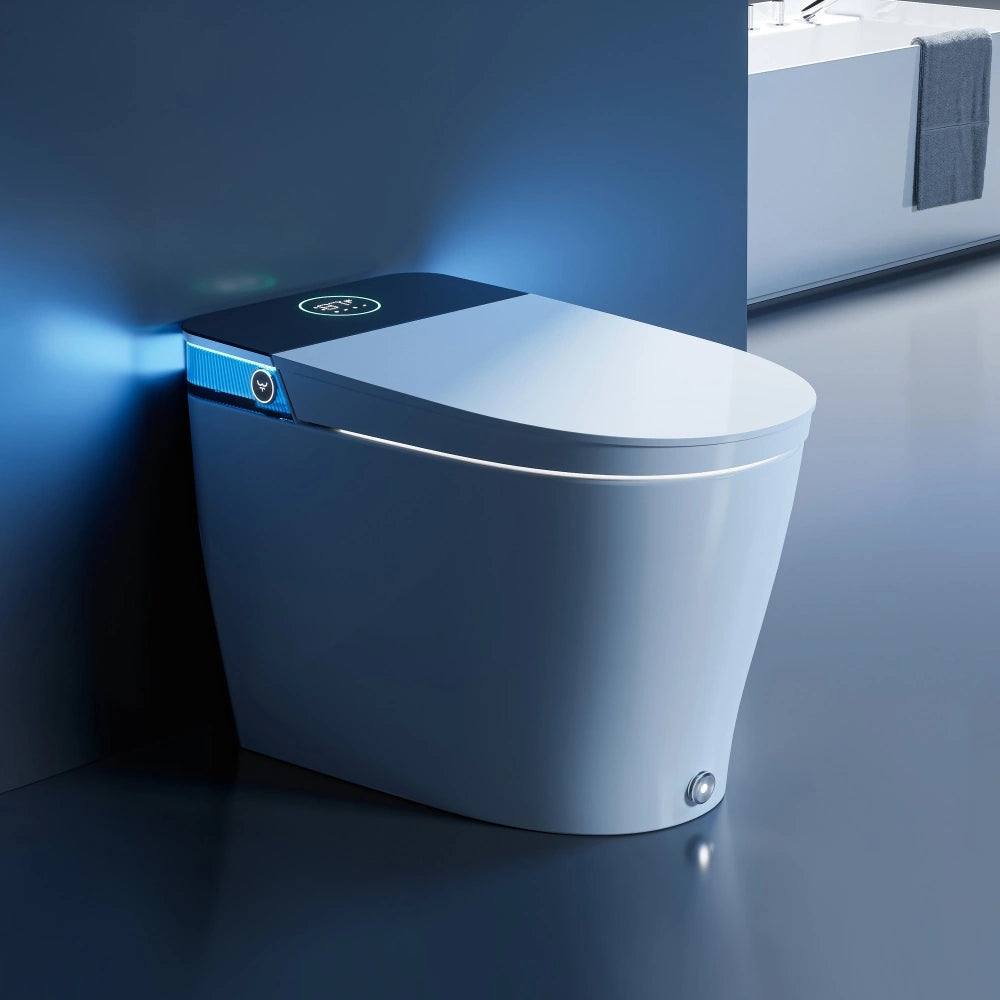
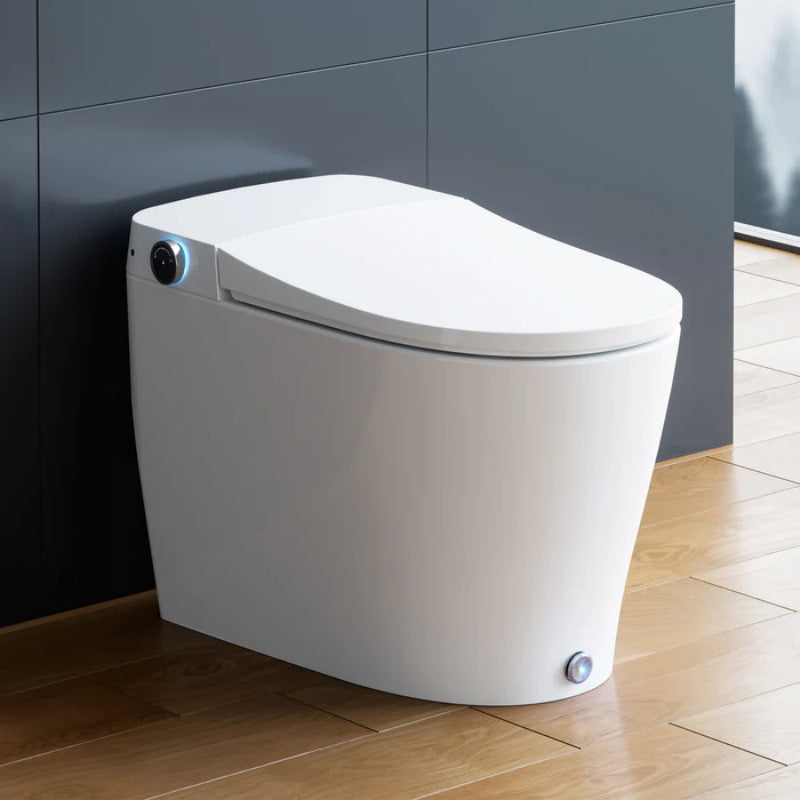
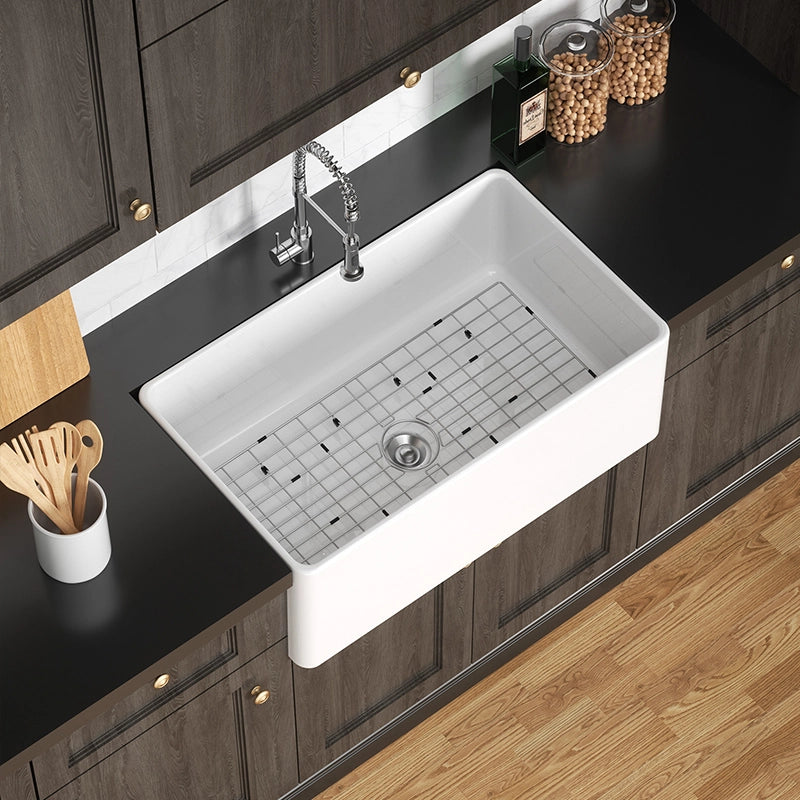
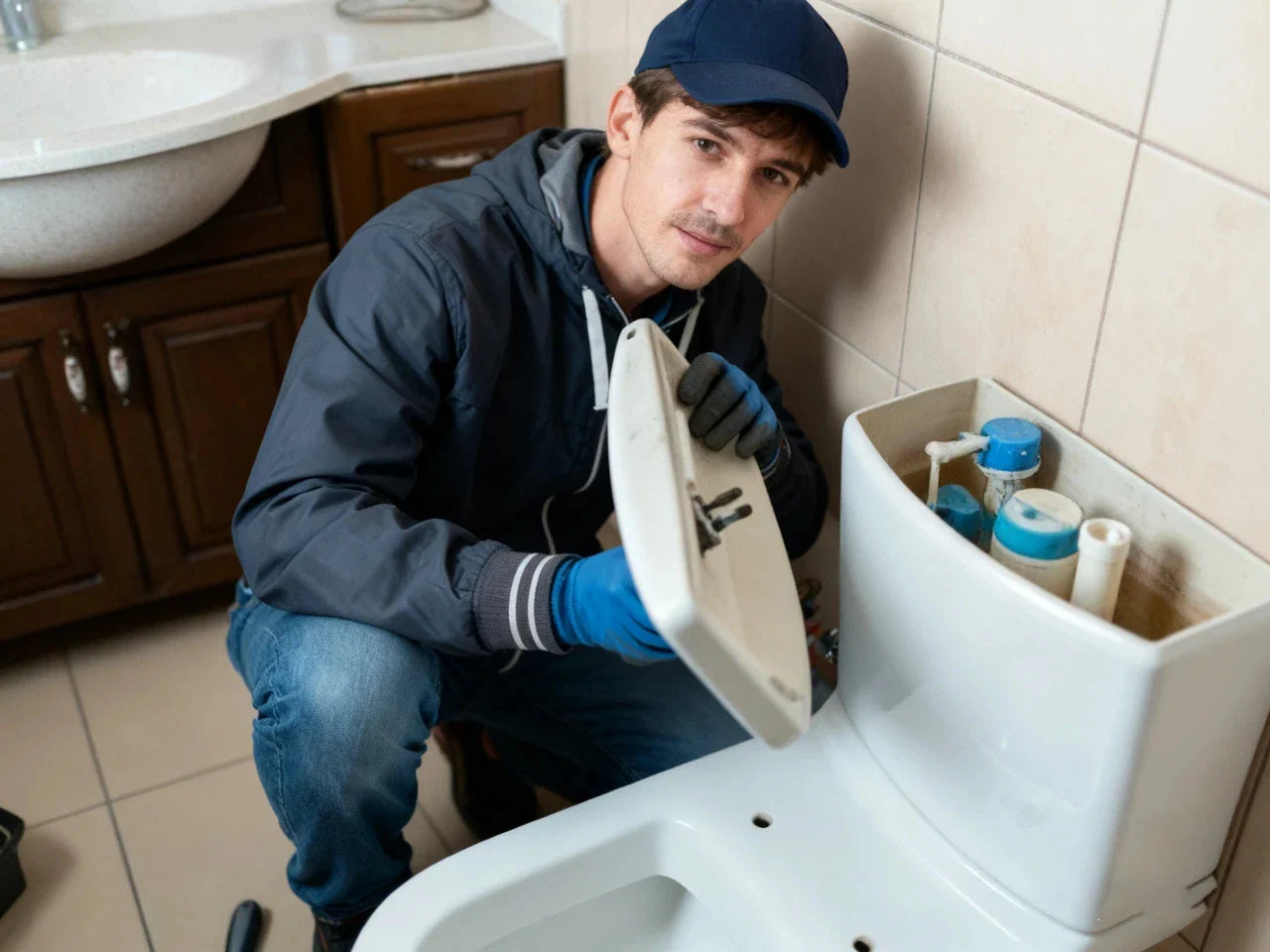

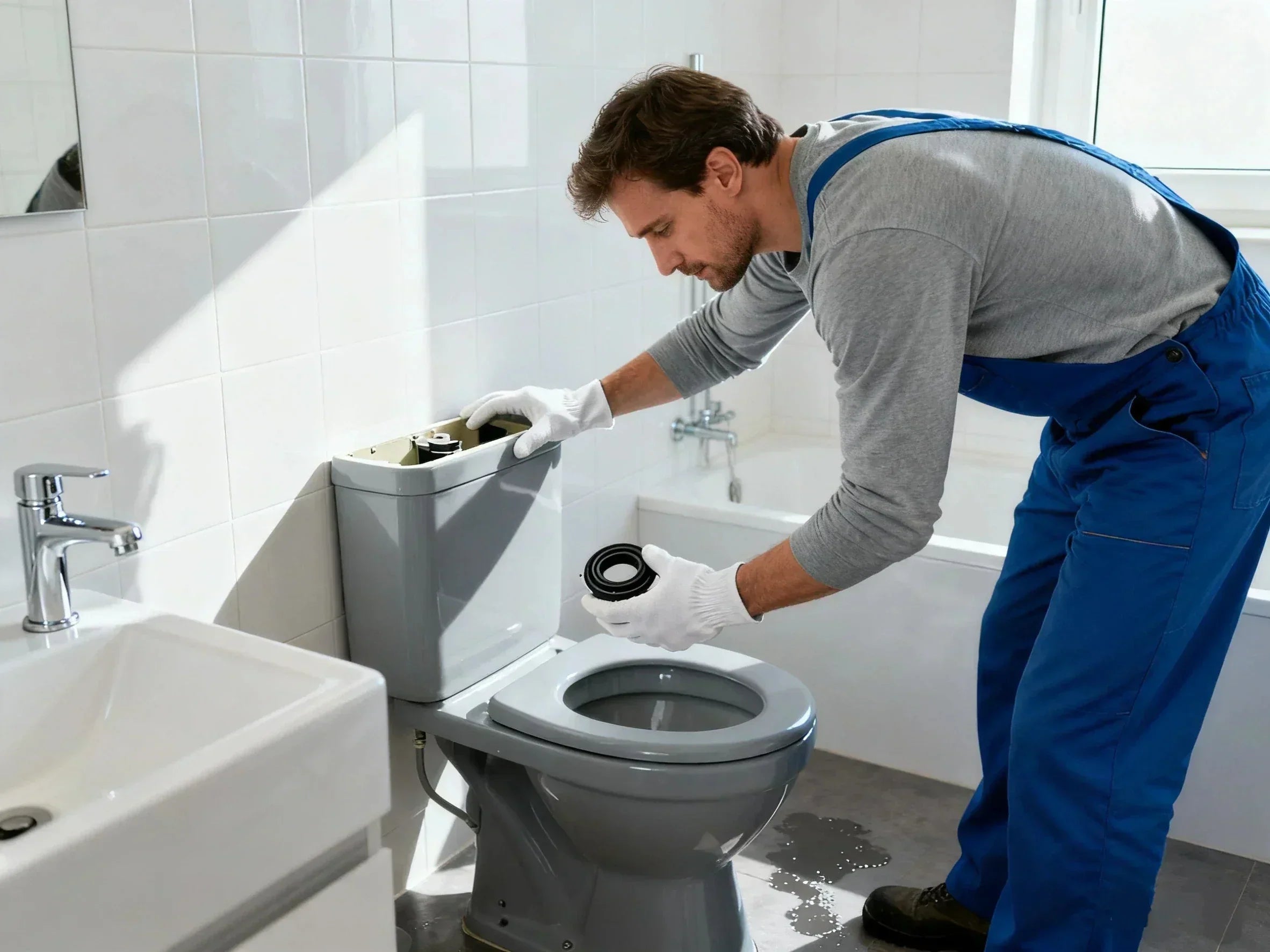

Leave a comment
This site is protected by hCaptcha and the hCaptcha Privacy Policy and Terms of Service apply.